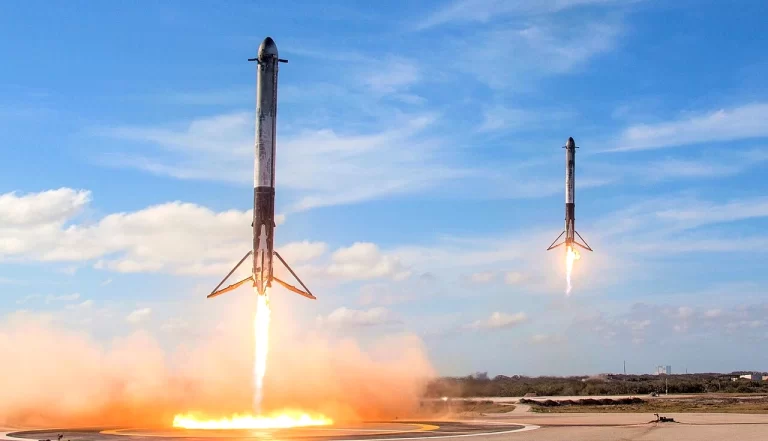Federal Express (FedEx), founded by Fred Smith in 1971, transformed the logistics industry with its innovative overnight shipping service. Officially named FedEx in 2000, the company has grown into a global giant, delivering millions of items daily to over 200 countries.
Company Overview: A Trailblazer in Express Transportation
 FedEx, a name that has become synonymous with rapid and reliable delivery, embarked on its journey with a clear aim: to provide a definitive time-bound express delivery service. This ambitious vision quickly bore fruit as FedEx became the first company in the U.S. to surpass $1 billion in revenue within just a decade of starting operations. Fast forward to today, and FedEx has established itself as the largest express transportation company globally. It boasts a formidable workforce of approximately 200,000 employees, efficiently managing over 3 million shipments each day, a testament to its enduring commitment to excellence in delivery and logistics services.
FedEx, a name that has become synonymous with rapid and reliable delivery, embarked on its journey with a clear aim: to provide a definitive time-bound express delivery service. This ambitious vision quickly bore fruit as FedEx became the first company in the U.S. to surpass $1 billion in revenue within just a decade of starting operations. Fast forward to today, and FedEx has established itself as the largest express transportation company globally. It boasts a formidable workforce of approximately 200,000 employees, efficiently managing over 3 million shipments each day, a testament to its enduring commitment to excellence in delivery and logistics services.
Problem/Challenge: Innovating in a Competitive Market
FedEx’s entry into the market introduced a new challenge: establishing and maintaining a high-quality, reliable express delivery service. The company recognized the necessity of a comprehensive approach to customer satisfaction and service quality, leading to the development of the Service Quality Index (SQI).
Solution: A Focus on People, Service, and Profit
FedEx adopted a ‘People-Service-Profit’ philosophy. The company emphasized putting people first, understanding that excellent service would lead to profitability. This approach involved setting measurable objectives across the organization, evaluating managers based on the achievement of these objectives.
Results/Benefits: Setting Industry Standards
FedEx’s unique approach to logistics, incorporating advanced factors such as managerial sophistication, logistics know-how, and physical infrastructure, set new industry standards. The company excelled in providing package tracking and customer support functions, with its tracking systems being particularly notable for their innovation. FedEx’s differentiation strategy, coupled with its commitment to high-quality service, allowed it to charge premium prices and remain competitive.
FedEx Annual Revenue Visualization
FedEx has demonstrated impressive financial growth over the past decade, with its revenue rising from $50.4 billion in 2016 to $94 billion in 2022 before slightly adjusting to $90.2 billion in 2023. This trajectory reflects the company’s ability to scale operations and adapt to market demands, particularly during challenging periods like the COVID-19 pandemic. The significant leap between 2020 and 2021 highlights FedEx’s strategic innovations and its growing role in the global logistics landscape. Despite economic pressures in 2023, FedEx remains a leader, showcasing resilience and a commitment to operational excellence. These numbers underscore the company’s enduring relevance and strategic foresight in the competitive logistics industry.
Competitors Following Suit
Several competitors later adopted strategies similar to FedEx, including:
- United Parcel Service (UPS): Known for its comprehensive services for SMBs and a leading e-commerce player.
- DHL: Offering a wide range of services, from express to supply chain solutions.
- Kuehne + Nagel: Specializing in freight forwarding and IT-based logistics solutions.
- DB Schenker: Providing integrated logistics services in the Americas.
- XPO Logistics: An American logistics company, notable for its tech-driven solutions.
- GXO Logistics: A spin-off from XPO Logistics, focusing on tech-driven operations.
- Yellow Corp: Transforming into a super-regional LTL freight carrier.
- CEVA Logistics: Offering freight management and contract logistics.
- USPS: Competing in the package delivery sector with modernized operations.
- Blue Dart Express: A leading FedEx alternative in India, subsidiary of DHL.
- C.H. Robinson: Providing multimodal transportation management systems.
- Purolator: Canada’s leading integrated freight and logistics service.
- General Logistics Systems (GLS): A major courier provider in Europe.
- DPD Group: The second-largest parcel delivery network in Europe.
Conclusion: Business Lessons from FedEx’s Success
FedEx’s journey illustrates the importance of innovation, customer-focused strategies, and a balanced approach to business objectives. By prioritizing service quality and leveraging technological advancements, FedEx set a new standard in the logistics industry, demonstrating that a commitment to excellence in service can drive both growth and profitability.



